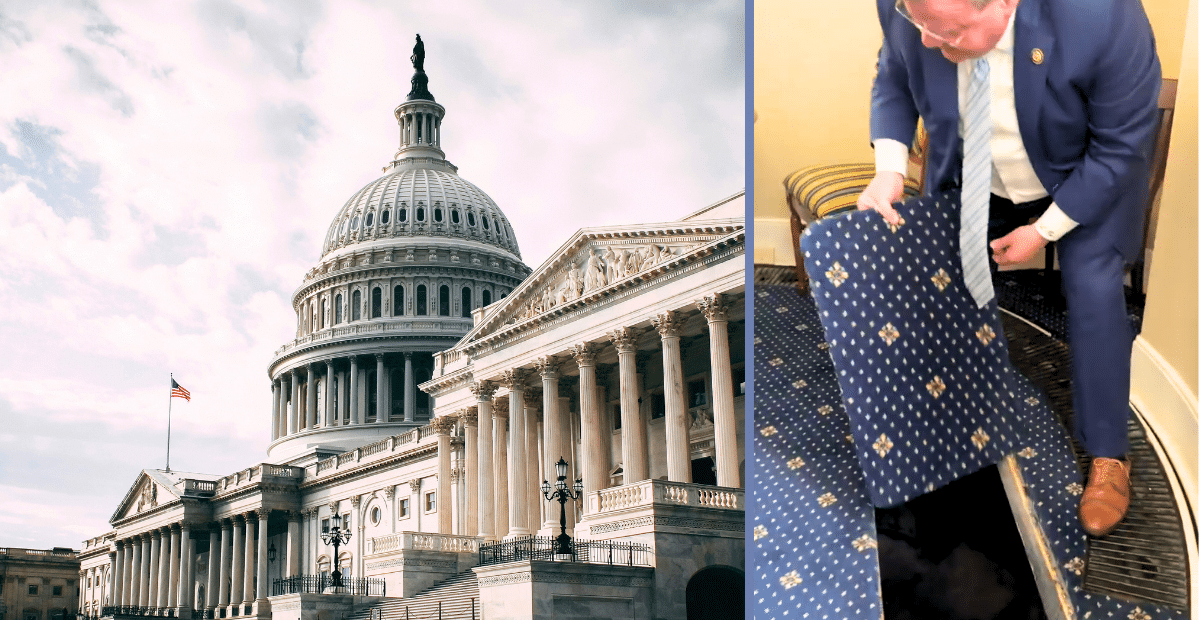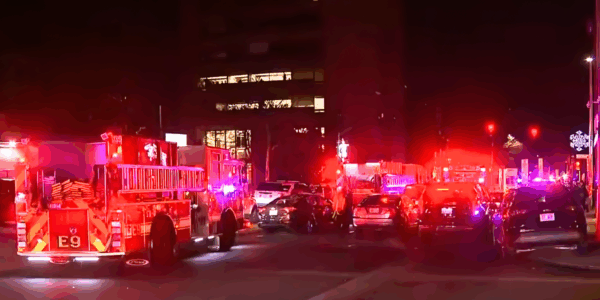U.S. Representative Shows Mysterious Passageway Under Capitol
on May 12, 2025

Passageway Under Capitol Sparks Intrigue
In 1792, then Secretary of State Thomas Jefferson proposed a contest for citizens to submit designs for both the White House and the United States Capitol.
A couple centuries later, both buildings remain in use by, respectively, the executive and legislative branches of the United States government.
They are also popular tourist attractions that, as a result of their age, are even surrounded by a dose of mystery.
In a video recently shared on X, formerly Twitter, Rep. Tim Moore, R-NC, showed one of several hidden passageways running underneath the Capitol.
No, it’s not the stuff of National Treasure, but it’s still a surprising, and storied, part of the Capitol building’s history.
Rep. Tim Moore’s Video
Seen lifting up a piece of carpeted floor in the Lincoln Room, which is located off of the Capitol’s Statuary Hall, Moore reveals a stairway leading to a passageway underneath the Capitol.
“So this is one of the neat things about the U.S. Capitol,” Moore begins. “There all sorts of little hidden passageways.”
Speaking with passion, and even humor, Moore guides the cameraman toward the hole, joking, “Don’t fall in. We don’t need a worker’s comp claim today.”
Historically, Statuary Hall was once where the House Chamber was located in the Capitol. By 1850, with the addition of several states to the Union with Westward expansion, it became clear that the Capitol would need to be expanded.
When President Abraham Lincoln was a representative of Illinois, Moore said the future president “sat by the fireplace in this room to read his letters.”
Watch the video of Moore showing the passageway here:
Come with me to see one of the hidden secrets of the Capitol!
— Congressman Tim Moore (@RepTimMooreNC) May 9, 2025
The Lincoln Room is one of my favorite spots to bring visitors — when President Lincoln was serving in the House, he sat by the fireplace in this room to read his letters, but the most interesting part of the room is… pic.twitter.com/hp36jfQrk4
The History Of The Passageway
The particular passage Moore showed, he’s been told, was once used by invading British forces in 1814 which led to the burning of the Capitol building.
This was done during the Chesapeake campaign of the War of 1812, when British Major-General Robert Ross led his forces to Washington, D.C., on August 24, 1814.
Famously, the White House was burned that same day, compelling First Lady Dolley Madison to save a 1796 painted portrait of President George Washington from being lost in the blaze.
In a separate post, Moore responded to some concerns that he was showing security weaknesses or secrets of the Capitol, stating, “To clear things up: while it’s now beneath a newer floor, this is not a tunnel. It’s a sealed-off exit that once led directly from the Capitol’s second floor to the outside. It’s been closed off for decades and is public information.”
He added, “I always enjoy sharing pieces of history with folks back home, and it’s great to see so many people interested in it!”
Later in his video, Moore further dispels any security concerns by noting this passageway is shown in some tours of the Capitol.
“If it’s a small enough group … we’ll actually take them down this hole,” Moore said of visitors partaking in Capitol tours, noting he’s been down there himself.
To learn more of Capitol tour opportunities, visit www.visitthecapitol.gov/visit/book-a-tour.











